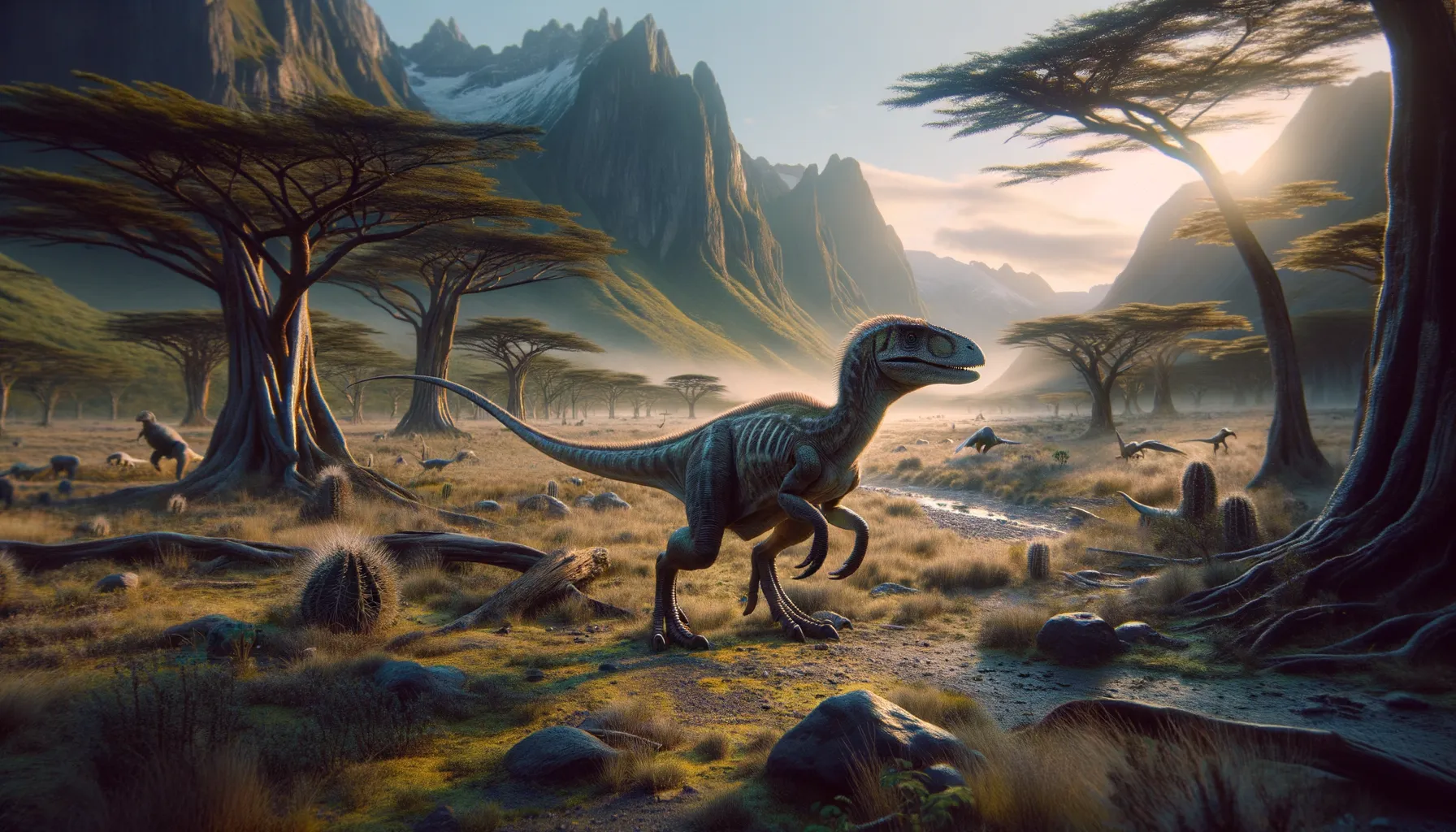
Patagonykus
Nimble predator of the ancient Argentine plains
Period
Cretaceous
Length
Approximately 2 meters long.
Height
About 1 meter tall at the hip.
Weight
Roughly 50 to 70 kg.
Patagonykus was a small, nimble theropod dinosaur that lived during the Late Cretaceous period. It is classified within the group Alvarezsauridae, which is known for its bird-like characteristics. Discovered in the Patagonia region of Argentina, it shares features with both birds and non-avian dinosaurs, indicating its place in the evolutionary transition. Aided by its long, agile legs and small body, Patagonykus was likely a quick-moving predator, adept at seeking out small prey.
Diet
Patagonykus was likely an insectivore, feeding primarily on small insects. It may have used its sharp beak to pick insects from crevices or the ground. Its diet might have also included small vertebrates and other invertebrates.
Hunting
Patagonykus would have used its speed to dart after quick, elusive prey. It possessed strong forelimbs with a large single claw for grasping or digging. This suggests it may have been adept at breaking into insect nests or catching small animals hidden in the underbrush.
Environmental challenges
Living in the Cretaceous period, Patagonykus faced environmental changes such as climate fluctuations and volcanic activity. It had to adapt to shifts in vegetation and prey availability. It also needed to navigate the presence of larger predators and potential competitors for food resources. Such challenges would have influenced its behavior, diet, and survival strategies over time.
Speed
Likely fast for short distances due to its long legs.
Lifespan
Estimated to live around 20-30 years.
First discovery
Discovered in Argentina in the late 20th century.
Fun Facts
- Patagonykus was a small theropod dinosaur that lived about 90 million years ago in what is now Argentina.
- This dinosaur belonged to a group called Alvarezsauridae, which had unique adaptations suited for digging.
- Patagonykus had strong, clawed hands, which it likely used to dig for insects or other small prey.
- It was a bipedal dinosaur, meaning it walked on two legs, similar to modern birds.
- Patagonykus was relatively small, estimated to be about 1.5 meters (roughly 5 feet) in length.
- Fossils of Patagonykus were discovered in the Patagonian region of Argentina, giving it its name.
- The discovery of Patagonykus has helped scientists better understand the diversity and evolution of theropod dinosaurs.
Growth and Development
Patagonykus likely grew quickly from hatchling to adulthood, requiring ample food sources for energy. During growth, it developed its distinctive physical features, such as its long legs and sharp beak. Its development may have involved learning hunting techniques from older individuals. Fossil evidence suggests that its growth cycles were similar to those of modern birds.
Habitat
Patagonykus inhabited the diverse plains and forests of Late Cretaceous South America. Its environment featured abundant vegetation and a variety of prey species. It likely occupied niches where it could use its speed and agility to its advantage. The habitat provided a blend of open spaces and dense areas for foraging and taking cover.
Interaction with other species
Patagonykus interacted with various dinosaurs, including larger carnivores that could pose threats. It may have lived alongside other bird-like dinosaurs, sharing resources or habitats. Its interactions with flora included potential competition for insect prey with other insectivorous species. Fossil evidence suggests occasional encounters with herbivores in its region.
Natural lifespan
In the wild, its lifespan likely ranged from 20 to 30 years.
Reproduction
Patagonykus likely laid eggs, similar to modern birds. Nesting behaviors might have included constructing nests or burrows in concealed locations. Parents may have provided some care to young hatchlings, protecting them and possibly bringing food. Its reproductive strategies would have been adapted to increase offspring survival against predators.
Social behaviour
Patagonykus might have exhibited some social behaviors, especially during mating season. It could have lived in small groups or pairs for cooperation in hunting or defense. Communication might have involved vocalizations or physical displays to establish territory or attract mates. Social behavior would have depended on environmental pressures and food availability.
Fossil locations
Fossils of Patagonykus have been found primarily in Argentina. The notable sites include deposits in Patagonia, contributing significantly to our understanding of its existence. These fossil discoveries help establish the range and habitat of Patagonykus. Continued exploration in Argentina may uncover more specimens and insights into its behavior and ecology.
